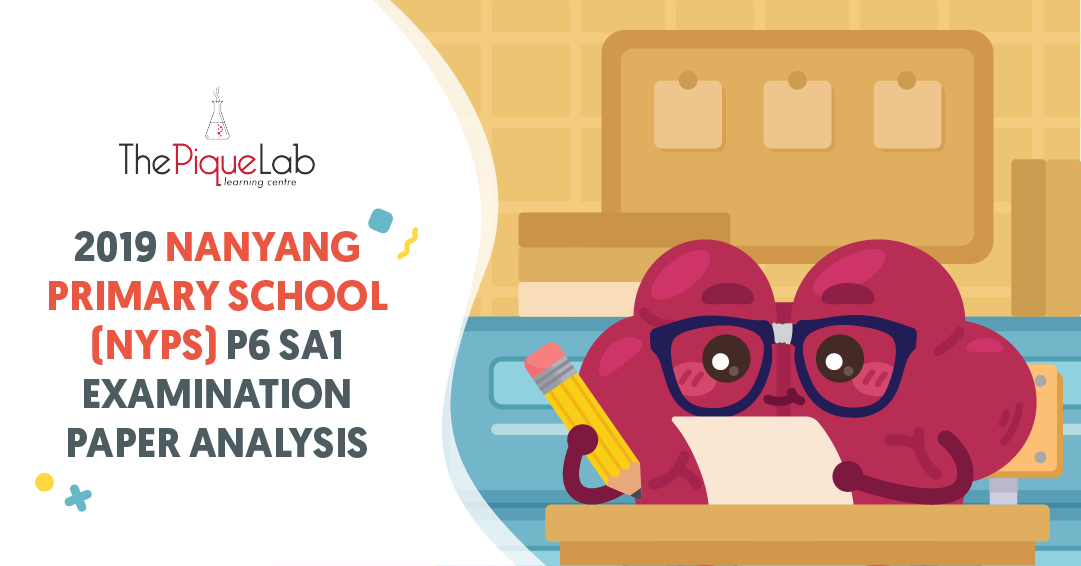In this article, I will be analysing a question on Body Systems from the 2019 Nanyang Primary School (NYPS) P6 SA1 Examination Paper. I will also be discussing some misconceptions many students have about this topic, and sharing some question types involving various concepts that can be tested during your Science examinations.
You may also choose to watch the video here.
Read Also:
Let’s Get Started On This Question!

Source: Nanyang Primary School – 2019 P6 SA1 Examination Paper [Q36]
Let’s Analyse Part (A)
“In the diagram above, put a cross (X) at the part of the human digestive system where the digestion of food was skipped in this method of feeding.”
When we talk about the digestion of food, the first thing you should ask is: “Where does digestion take place?”
🍽 Digestion of food takes place in three parts of the body:
1. Mouth (not labelled in the diagram)
2. Stomach
3. Small intestine
Now let us look at which part was skipped. The question states that the tube was inserted through the nose and the gullet into the stomach directly.
This means that they missed the mouth.
Suggested Answer For Part (A)

⚠️ Misconception Alert!
Out of all these three organs (stomach, mouth and small intestine), where does the most amount of digestion take place?Here’s a common misconception that many students have: a lot of them will say that it is the stomach.
This is because from an early age, students have been taught that the stomach digests food. Thus, they will also think that the stomach is where the most amount of digestion takes place.
Well, that is not true! ❌
In fact, the most amount of digestion takes place in the small intestine. This is because digestion depends on digestive juices. If the small intestine is where the most amount of digestion takes place, the most amount of digestive juices must be released there as well. Conversely, the least amount of digestion takes place in the mouth because that is where the least amount of digestive juices are released.
🍔 The amount of digestion that takes place depends on digestive juices.
The mouth, stomach and small intestine carry out digestion, but the mouth will have the least amount of digestion and the small intestine will have the most amount of digestion.
Let’s Analyse Part (B)
“Explain how the patient was still able to obtain his nutrients using this method of feeding.”
In this question, “nutrients” refers to the digested food. How is the patient able to obtain and digest this digested food with this method of feeding/eating?
Let us examine the role of the mouth in the usual process of eating. The mouth performs two specific actions:
- Digestion: The mouth breaks food down into simpler substances.
- Chewing: The act of chewing breaks down the food into smaller pieces.
⚠️ Misconception Alert!
✅ Chewing breaks down the food into smaller pieces.
❌ Chewing breaks down the food into simpler pieces.It is very common for students to mistake the term “smaller” for “simpler”, but these two terms are NOT interchangeable.
The act of chewing has to do with the exposed surface area of the food. Chewing breaks food down into smaller pieces, which increases the surface area of food in contact with the digestive juices. This speeds up the rate of digestion.
Suggested Answer For Part (B)
The feeding tube bypasses the mouth and pumps nutritional drinks directly into the stomach. The drinks are liquid so no chewing is required to break them down into smaller substances. Instead, digestion takes place in the stomach and small intestine where the nutritional drinks are broken down into simpler substances by the digestive juices released by the stomach and small intestine.
After digestion takes place, the body begins to absorb the digested food (nutrients) through the walls of the small intestine, into the bloodstream, and then transports the nutrients to all parts of the body. Thus, the patient can still obtain nutrients through tube feeding.
⭐️ PSLE Science Tip: Many students tend to stop after describing how digestion takes place. However, the question states that the answer must explain how the nutrients are obtained.
Digestion is only half the story! Without relating this to the circulatory system by absorption, you would have failed to address how these nutrients are transported to the other parts of the body.
Common Examples Of How Body Systems Concepts May Be Tested During Science Examinations
1) Folds In The Small Intestine
You may be given a diagram of the small intestine drawn with the folds (villi).

The question is usually along the lines of:
“How do the folds in the diagram help with the process of digestion?”
When we look at the process of digestion, it not only involves the breaking down of food into simpler substances, but also the absorption of food.
The folds increase the rate of absorption by increasing the surface area of the walls of the small intestine in contact with the digested food.
2) Removal Of Selected Body Parts (Application Question)
Our PSLE Science Specialists at The Pique Lab have noticed a trend where Science teachers ask how digestion is impacted when a certain part of/the entire stomach is removed. They may also ask what would happen if a part of the small intestine were to be removed.
These are questions that you must be prepared to encounter and answer! If not, you will waste time during your examination on trying to phrase a coherent answer.
Another related question involves the large intestine.
“How is digestion impacted when a large portion of the large intestine is removed?”
Many students think that digestion would be affected because the large intestine is part of the digestive system.
Well, the answer is “No, digestion is not impacted”!
⚠️ Misconception Alert!
Digestion takes place in three organs: the mouth, stomach, and small intestine.
The length of the large intestine does not affect digestion. Instead, it affects the absorption of excess water and mineral salts.
This means that if a large portion of the large intestine was removed, the person would have difficulty absorbing the excess water and would experience more watery stools, which is the kind of stool or waste material that is passed from our body when we have diarrhoea!
3) Role Of The Gullet
One pitfall that our PSLE Science Specialists at The Pique Lab notice is students tend to get confused about the role of the gullet.
Many students ask, “Food is mixed with saliva and the saliva contains digestive juices, doesn’t it mean that digestion takes place at the gullet?”
In order for digestion to take place, digestive juices must be released. Since the gullet does not release any digestive juices, digestion does not take place at the gullet!
Although it is true that some food mixed with saliva may be broken down as it passes through the gullet, the official answer is still “No, no digestion takes place at the gullet”.
4a) Relating Digestive System To Other Body Systems
You must also learn to relate the digestive system to other body systems.
Here’s an example:
“There are three systems, System X, System Y, System Z. What can you tell me about System Y?”
This is usually accompanied by a diagram:

When we see such a diagram, we can immediately conclude that System Y is the circulatory system. This is because the circulatory system acts as a middleman. It takes digested food from the digestive system, and oxygen from the respiratory system and transports them to all parts of the body.

The following is another classic question commonly asked in Science examinations:
“How does the digestive system work together with the circulatory and respiratory systems to provide energy for the body to move?”
You must be able to link the different functions together:
- The digestive system breaks down food into simpler substances, which are absorbed through the walls of the small intestine into the bloodstream.
- The respiratory system takes in air from the surroundings. Oxygen then gets absorbed through the lungs into the bloodstream.
- The circulatory system then transports the digested food and oxygen through the blood vessels to all parts of the body, which is used in respiration to release energy and carbon dioxide.
- The energy allows our body to move, and the carbon dioxide is absorbed back into the bloodstream and transported to the lungs where it is passed out and then exhaled.
4b) Other Questions Related To Other Body Systems
Although most Body Systems questions focus on the digestive system, there is also a whole range of questions involving the respiratory and circulatory systems.
Some of the common questions include:
“How are smokers’ lungs affected by smoking?”
You need to explain that smoking causes deposits on the inner walls of the air sacs. These deposits reduce the exposed surface area for the exchange of gases.
“What happens when a person has an asthma attack?
For such questions related to asthma attacks, you may be given a diagram that shows how the airway closes up. You may then be asked to explain how this affects the breathing rate.
“What happens when someone has a stroke?”
When a stroke occurs, it can be caused by excess fats that were deposited on the inner walls of the blood vessel. You will have to explain how this affects the transport of oxygen to other body parts.
These are some questions that you need to be comfortable and confident answering so that you will not be thrown off guard when encountering similar questions in your Science examinations!
Conclusion
I have covered the common Science examination questions of different body systems that you can prepare during your revision. I have also pointed out the common misconceptions that many students have about the different body systems and body parts that you need to know to score the full marks for such questions in your examinations!
Check out our other articles on Body Systems and stay tuned for more articles! 😊

If you like our methodology, we've some upcoming workshops:







